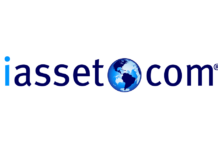International Data Corporation (IDC) released the first two reports on the evolution and adoption of three-dimensional (3D) printing in Canada.Canadian Healthcare Use Cases for 3D Printing and 3D Printing in the Canadian Automotive Industry examines how 3D printing technology is currently being used, the business benefits, and barriers to entry in key industries, while a forth coming report on the Canadian 3D printer market explores the competitive landscape. It aims to assist product, marketing and channel professionals with assessing opportunities within the rapidly emerging 3D printing market in Canada.
Some key findings include:
- That the Canadian automotive industry is lagging behind in adoption of 3D printing compared with the United States.
- The majority of applications for 3D printing in the Canadian automotive industry are in the pre-production phase.
- In the healthcare sector, medical and dental end-users are more likely to adopt existing applications for 3D print than to support the creation of and research into new applications.
- The greatest inhibitor for adopting 3D printing is the initial hardware acquisition cost.
"Adoption of 3D printing, or additive manufacturing (AM), by the automotive industry is expected to have a significant impact on the Canadian economy, and has been identified as integral to the restoration of Canada's manufacturing sector," says George Bulat, Research Director for Client Hardware at IDC Canada. "Automakers can integrate AM into their supply chain, with low volume automotive parts manufacturers utilizing the technology to help lower production costs, allowing the manufacturers to compete more effectively," he says. "In regards to healthcare, the future of 3D printing in Canada is also promising, thanks to innovative applications at medical institutions and an emerging supply chain opportunity for service bureaus."
IDC predicts that the worldwide 3D printer market will experience tremendous revenue growth over the next five years as 3D printing is increasingly being used in business applications where substantial cost and time-to-market benefits are to be gained. In addition to general manufacturing and research and development applications, the technology is also prevalent in the aerospace, automotive, education, dental, jewelry, medical and recreational markets. Meanwhile, consumer adoption has moved well beyond early adopters and hobbyists as average selling prices decline.












